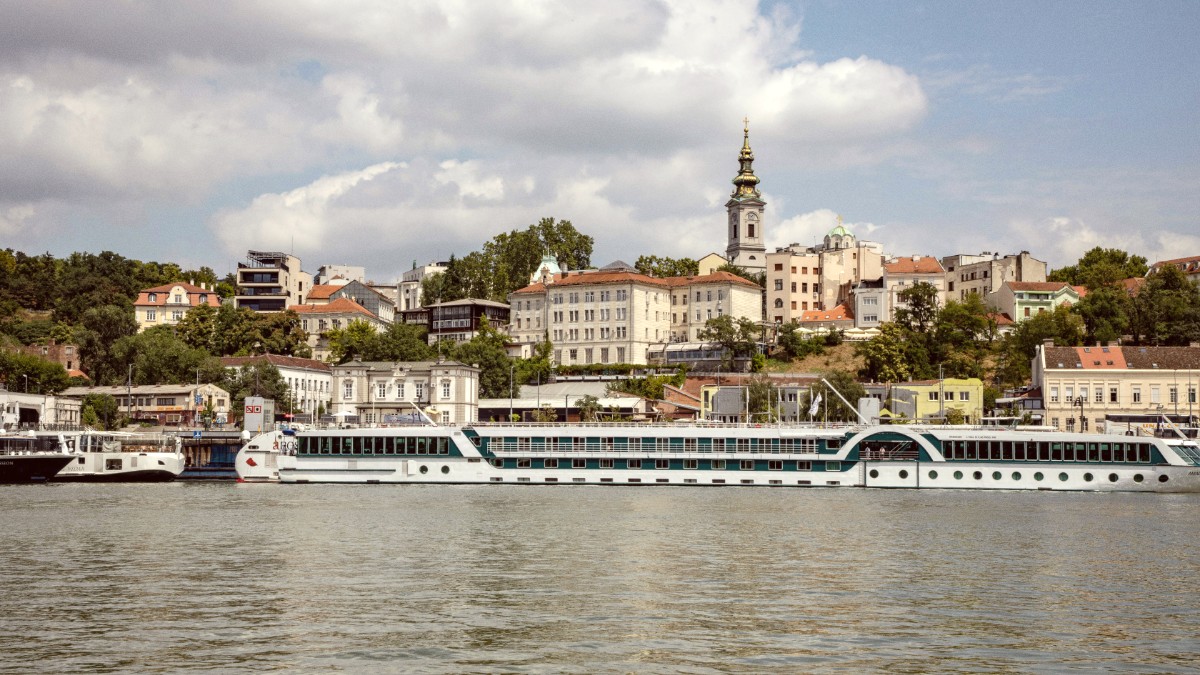
Serbia
Summer (June-August): These months bring hot and often humid conditions. Average temperatures range from 20°C to 25°C (68°F to 77°F), but frequently climb above 30°C (86°F). You will find intense sunshine and potential afternoon thunderstorms, which deliver a brief, refreshing break from the heat. Long daylight hours fit outdoor activities and evening strolls.
Autumn (September-November): Autumn offers a more mild and pleasant climate. Temperatures gradually decrease from around 20°C (68°F) in September to 10°C (50°F) by November. This season generally sees less precipitation compared to spring or summer, making it comfortable for exploring. Changing leaves create picturesque scenery, especially in the city's parks.
Belgrade's climate can present specific conditions. Summer heatwaves, with temperatures often exceeding 35°C (95°F), ask travelers to stay hydrated, seek shade during midday, and plan activities for cooler morning or evening hours.
Winters can have significant snowfall and icy conditions, especially in January and February. These conditions affect walking on pavements and may lead to minor disruptions in public transport. Always check the weather forecast close to your travel dates.
Warmest, most crowded
Ideal for outdoor activities, riverfront enjoyment, and nightlife. Festivals are frequent. Long daylight hours.
Very hot and humid. Crowded with tourists, longer queues. Higher accommodation and flight prices.
Pleasant, fewer crowds
Pleasant temperatures for sightseeing. Fewer crowds. Lower prices. Many cultural events.
Weather can be unpredictable, with occasional rain. Some river activities might be limited.
Coldest, best value
Lowest prices for flights and accommodation. Authentic local atmosphere. Picturesque snowfall.
Cold weather, shorter daylight hours. Some outdoor attractions may be closed. Warm clothing is necessary.
Sightseeing & Walking Tours: The shoulder seasons (April-May and September-October) offer comfortable temperatures, making them fit for exploring the city on foot without the intense summer heat or winter cold. Nightlife & River Activities: Summer (June-August) is the best time to experience Belgrade's famous splavovi (floating clubs) and outdoor cafes, which are in full swing.
Festivals: Check specific festival dates, as many of Belgrade's larger music, film, and cultural festivals occur during the summer months, attracting large crowds and adding to the city's lively atmosphere. Budget Travel: The low season (November-March) presents the best opportunities for budget-conscious travelers due to lower prices for flights and accommodation. While colder, it allows for a focus on indoor attractions and a more local experience.
High temperatures may make midday exploration less comfortable.
Expect snowfall and icy conditions, notably in January and February.
Occasional rain showers are possible; a waterproof jacket is a good idea.
Serbia maintains a welcoming visa regime for many nationalities, simplifying travel for a wide range of visitors.
Citizens of the European Union, United States, Canada, United Kingdom, Australia, New Zealand, Brazil, Russia, China, and Japan can enter Serbia without a visa. These visa-free stays typically last up to 90 days within any 180-day period. This period allows for ample time to explore Belgrade and other parts of Serbia.
Prepare all necessary documents carefully to avoid delays.
For standard tourist activities within Belgrade and generally across Serbia, no specific permits are necessary. You can freely visit attractions, participate in tours, and explore different areas without additional permissions.
Belgrade presents options for various spending levels, from budget-friendly choices to more luxurious experiences.
The local currency in Serbia is the Serbian Dinar (RSD). Familiarize yourself with it before and during your trip.
ATMs are widely available throughout Belgrade, especially in the city center, shopping malls, and at the airport. These ATMs offer a convenient way to withdraw local currency. Exchange offices (Menjačnica) are plentiful and often present competitive exchange rates for major foreign currencies like EUR, USD, and GBP.
Daily Costs: 30-50 EUR (approximately 3,500-6,000 RSD)
Accommodation: 10-20 EUR (hostel dorm)
Meals: 5-15 EUR (street food, bakery, groceries)
Daily Costs: 70-120 EUR (approximately 8,000-14,000 RSD)
Accommodation: 40-70 EUR (mid-range hotel/apartment)
Meals: 20-40 EUR (local restaurants)
Daily Costs: 150+ EUR (approximately 17,500+ RSD)
Accommodation: 100-300+ EUR (4-5 star hotel)
Meals: 50+ EUR (fine dining)
| Category | Item | Price Range (EUR) |
|---|---|---|
| Accommodation | Hostel dorm beds | 10-25 |
| Food | Burek (bakery pastry) | 1-3 |
| Transportation | Single public transport ticket (app) | ~0.75 |
Serbia is generally a safe country for tourists, but local conditions and preparing for common issues is wise.
Measles, Mumps, Rubella (MMR), Diphtheria, Tetanus, Pertussis (DTP) should be up to date. Consult a medical professional 4-6 weeks prior to travel for personalized advice.
Minor upsets can occur due to diet changes. Practice good food hygiene. Consider Bottled water if you have a sensitive stomach.
Common in winter. Practice hand hygiene. Bring over-the-counter Cold remedies.
Sunburn and Heat Exhaustion:
In summer, sun exposure and high temperatures are significant. Use Sunscreen, wear a hat, stay hydrated by drinking water, and seek shade during the hottest parts of the day.
Insect Bites: Mosquitoes may be present near rivers in warmer months. Use Insect repellent, particularly in the evenings.
Access to healthcare: Private clinics are generally preferred for non-emergency care.
For law enforcement assistance.
For urgent medical assistance.
Connects to all services; works from any mobile phone.
Belgrade is generally a safe city for tourists. Violent crime against tourists is rare. However, like any large city, it has some safety considerations:
A comprehensive Travel insurance policy is recommended for your trip to Belgrade. It offers financial protection against unforeseen circumstances.
Medical emergencies, trip cancellation/interruption, lost luggage, personal liability.
Carry insurance details (policy number, emergency contacts) both digitally and physically.
Access to a 24/7 hotline for medical, legal, or travel assistance.